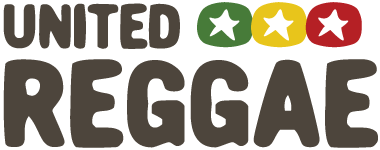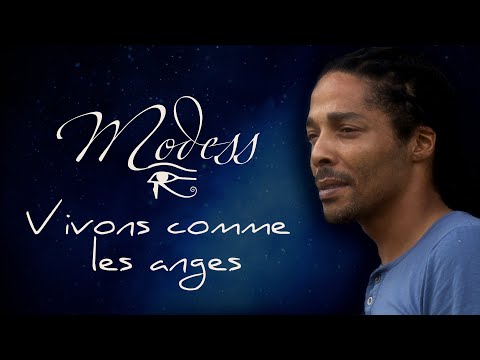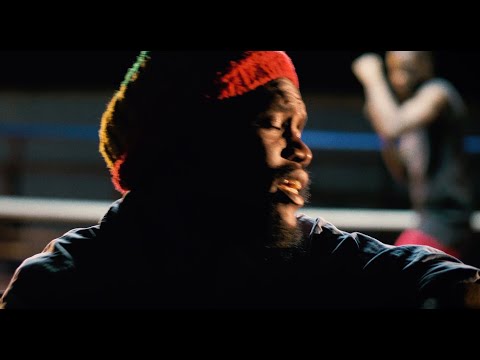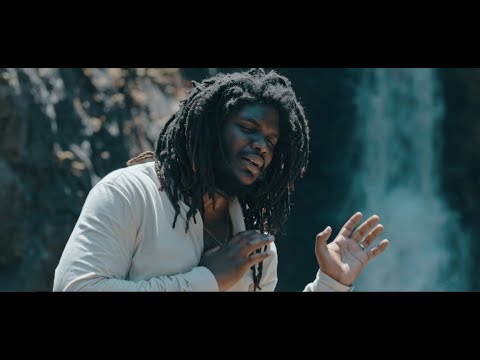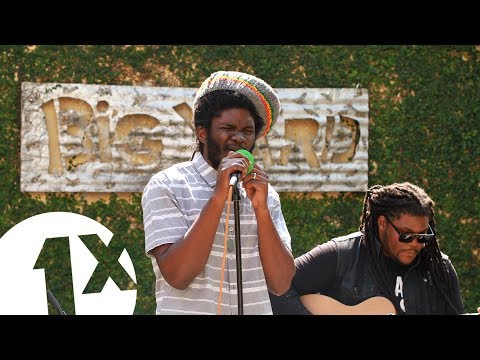Articles about reggae music, reviews, interviews, reports and more...
Interview: Micah Shemaiah
- Home
- Articles
- Interviews
- Interview: Micah Shemaiah

Interview: Micah Shemaiah
"When I left school I started to really put my Rastafari traditions into my music and started writing songs"
One of the more prominent of the “reggae revival” artists to make waves during the last five years, Micah Shemaiah has released a range of inspiring material, both at home in his native Jamaica, and overseas. Here he discusses his career with a particular focus on the Roots I Vision album, released by the Geneva-based Evidence Music.
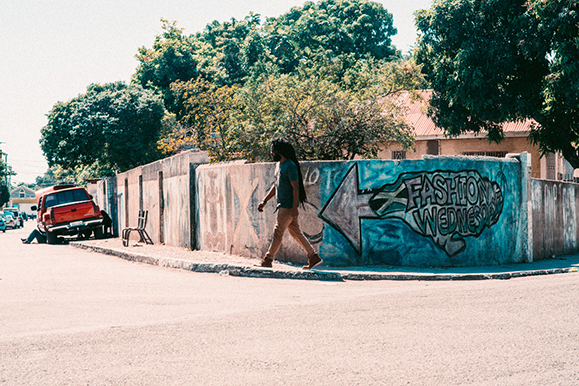
I’d like to start by getting some background information. Where and when were you born?
I was born in 1981 in a place called Dread Heights; well, I was actually born in Jubilee Hospital but my parents lived in Dread Heights at that time, that’s where 12 Tribes was basically starting. It’s in Kingston, up in the August Town, Papine area, but you would have to go really deep inside to find Dread Heights. I lived there for the first 5 years of my life, then I went to Clifton Road, that’s off Chisholm Avenue, Kingston 13.
Were you raised by your parents?
Yes. My mom was a seamstress at the time, and my father used to make baked products and stuff like that, and he had a roots business as well. Then he went to the US a few times to try and juggle, that’s how my parents…basically, it was a juggling thing. There wasn’t any set income.
Did you have a Rastafari grounding from that time?
Yeah, my parents were both 12 Tribes when I was born, so I was born in the 12 Tribes, born in a Rastafari house. 12 Tribes actually originated in Trench Town, in Davis Lane, but the thing came together in Dread Heights, places like that, that’s where the community of the 12 Tribes started to really blossom.
Is Micah Shemaiah your given name, or more an artist name?
It’s my given name. Micah Shemaiah Abrahams is actually my full name.
 The radio really draw me to the sound of music, then the 12 Tribes always had a lot of great musicians like Bob Marley and Dennis Brown and Freddy McGregor who were always there
The radio really draw me to the sound of music, then the 12 Tribes always had a lot of great musicians like Bob Marley and Dennis Brown and Freddy McGregor who were always there
How and when does music become a concrete part of your life? When did you become aware that you had vocal talent?
I think I was always interested in music, listening to a lot of stuff, cause the radio was our medium at that time; there was really no other way to hear new music, so I used to love listening to my radio more than playing a cassette, cause the radio would play random songs, it’s not of the same genre sometimes and I really like the vibes and the sound. So the radio really draw me to the sound of music, then the 12 Tribes, they always had a lot of great musicians like Bob Marley and Dennis Brown and Freddy McGregor who were always there, and we were growing up with at the 12 Tribes when I was a kid. So the constant rehearsals and the constant musical elements around in 12 Tribes, I was even more influenced. I used to just stand at the rehearsal room window and watch them rehearse like every single week, so that really made me start getting interested in how music was played, how the whole thing was put together, how it was arranged, composed, everything. That sparked my interest.
When do things get more concrete for you? The first I heard of you was in 2013 when “Dread At The Controls” came out. Was there anything happening before then?
Yeah, well, before then I actually had released an album. When I was maybe just over my 20s, I released an album called Rastaman Meditation, that was really like one of those projects where you’re doing music all through your teens and then you really want to just see if the world accept the sound and like the sound, so I put a solo project together which was produced by myself and some of the rhythms were built by some of my brethren, and I also built some of the rhythms as well. When I was going through school, I did all of the boy band thing; I used to sing in groups with my friends, singing Boyz II Men songs, I wasn’t even singing roots at that time, I was just experimenting with sound, you know what I mean? And at that time I never really knew I had a powerful vocal, I was mainly singing some small parts and harmonies in that group, and then when I left school I started to really put my Rastafari traditions into my music and started writing songs. That’s when I got really serious.
From what I can see, Rastaman Meditation was released around 2009. Where did you record it and which musicians were you using?
I didn’t use musicians. I did most of the rhythms; I played my guitar and then I built the tracks around it using a Roland keyboard that I had at the time. I basically played all the instruments, just by hearing, because I didn’t go to music school. So that’s how that album came about, everything basically started from a guitar strum.
 I used to sing in groups with my friends, singing Boyz II Men songs, and then when I left school I started to really put my Rastafari traditions into my music and started writing songs
I used to sing in groups with my friends, singing Boyz II Men songs, and then when I left school I started to really put my Rastafari traditions into my music and started writing songs
Did you release it in some physical form?
I released it on iTunes and also pressed 100 copies on CD. It was a tester album, it was just something that we were going all about, trying to figure out whether the world would accept our sound. Pressed 100 CDs and gave away most of them. Then, after that, during that period I was working as a paralegal in a law firm, I wasn’t doing music full time. So then after that, I stopped working at the law firm, I decided to go full time now into music, everything just started to move in a different direction. I started going to New York, performing with a group called Ancient Vibrations, with an elder who used to be part of the 12 Tribes, he’s a percussionist in the Lion Kings, Peter Wedderburn, so he had a group called Ancient Vibration, mainly drummers and dancers and I used to just sing and play my part, and it was really nice, it was really a groove for me to be in something like that. First time I went to England was with that group, and to Africa as well, South Africa, in 2010. So that’s when the journey really got to a serious level, because I started being exposed to more people, not necessarily that I had songs recorded and playing on the radio, but I was being introduced to people like Monty Alexander who really encouraged me with the songs that I had. So that was where I really started to understand and believe that I had something to offer to the world, quality.
Any other noteworthy things or releases between then and “Dread At The Controls”?
Yeah, well, that was what I was doing for the whole time. Before “Dread At The Controls” we weren’t really releasing a lot of stuff, we were just at EDB and Jah Ova Evil. Jah Ova Evil was, I would say, the turning point. When Joe died, we all decided to…as I said, I was going to America, performing at venues like Lincoln Center and places like that with Monty Alexander, just playing my guitar and singing, and then when I came back to Jamaica, Joe died and we decided to form an ensemble under his name, which is Jah Ova Evil, so Chronixx came to the yard, like a year before Joe died, looking to voice Joe, and Joe died and he ended up living in Joe’s room for more than two years, so we were there just making music together. Then, when Jah Ova Evil was born, we started performing together all over. At that time I was the more known one from the group of us, I was performing at Bob Marley Museum and all over the place, cause I was doing it a little while before the rest of them, so I used to introduce Chronixx and these people onto the stage, to the audiences in Jamaica, like the Kingston audiences mainly. So we were doing that for a while and then the breaks started to come. We were working at 12 Tribes as well, cause 12 Tribes was my home and we had a little studio there, working with people like Kabaka Pyramid. And so as I said, the breaks started to come and people started to get more affluent in terms of music, and that’s it. From Jah Ova Evil I went to EDB, that’s where Shalalack album came, that’s where “Dread At The Controls” also came, with Infinite, Kazam, and the whole Vinyl Thursday thing really was born out of my love for vinyl and pressing “Dread At The Controls” because when we pressed “Dread At The Controls” we really had nothing, we had no money, nothing. I remember my wife got some extra money from school; I asked to borrow $30,000, said, “Yo, can I borrow that to press ‘Dread At The Controls…’” She said, “What? Vinyl, nobody is pressing vinyl!” I was like, “Yo, it ah go work, just trust me.” She said, “All right,” and we did it, and it did work.
 The whole Vinyl Thursday thing really was born out of my love for vinyl because when we pressed “Dread At The Controls” we really had nothing—no money, nothing
The whole Vinyl Thursday thing really was born out of my love for vinyl because when we pressed “Dread At The Controls” we really had nothing—no money, nothing
When that came out, it shook everything up, with the way the cover was designed, and the sound. I remember being in Jamaica and at a friend’s house the TV was on and some incredible video came on, like, what on earth is this? I think I had not been on the island for about 3 years and I just could not believe that was what I was hearing and seeing on TV. It was a very pleasant surprise.
The video, we just used our phones and stuff like that, and then me and Ackeem Nephew did edit it and it was great.
Another track that came around the same time, like a sequel in a way, was “Reggae Rockit,” which again came in a very stylised picture sleeve and that very distinctive sound.
Yeah mon, we love that sound.
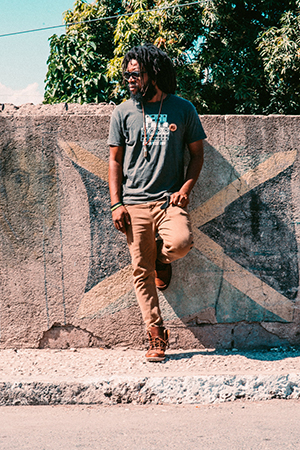 So you recorded prolifically from that time. You had your own album, Original Dread and were also on Shalalack, and there were works you did with various people like Ras Kush. Bringing it back to the Roots I Vision album, how did the project come about? How did you become involved in it?
So you recorded prolifically from that time. You had your own album, Original Dread and were also on Shalalack, and there were works you did with various people like Ras Kush. Bringing it back to the Roots I Vision album, how did the project come about? How did you become involved in it?
Well, Nico from Little Lion sound, I met him, I did a small show at Corner 25 in Switzerland, with my brethren Jay Unity, and he brought me to Evidence’s studio, to Nico’s studio just to chill and reason and do some dub plates, and we kind of hit a good vibe, and we started reasoning. I went back the next year and he told me about this project that he was really doing with Wayne Smith, and Wayne Smith ended up dying, so the rhythms were originally made for Wayne Smith. So they made me hear one of the rhythms and I liked it and I voiced on it, and then they just brought the full project to me. Like, “Yo, what do you think about this?” And they said they wanted to do an EP, and I’m like, “Yo, I don’t do EPs, I’m a single album kind of guy, so it’s either and album or its nothing.” They said, “All right, we’ll do an album.” So that’s where it started, and as I said, the vibe was really good. I actually stayed at Nico’s place in Switzerland, cause there’s a little part up from where the studio is, so I could get to work every day, every night. So it was pretty good to be in that experience.
 I did a small show at Corner 25 in Switzerland, with my brethren Jay Unity, and he brought me to Nico’s studio just to chill and reason and do some dub plates, and we kind of hit a good vibe. I went back the next year and he told me about this project that he doing
I did a small show at Corner 25 in Switzerland, with my brethren Jay Unity, and he brought me to Nico’s studio just to chill and reason and do some dub plates, and we kind of hit a good vibe. I went back the next year and he told me about this project that he doing
Is it somewhere close to Geneva?
It’s right at the airport.
So were the rhythm tracks already laid before you went to voice?
They weren’t already made, they were like, skeletons. They were nothing like what they sound like now. They were just skeletons.
Did you have much interaction with the musicians? Or you were just working with Nico?
Yeah, I’m always hands on when it comes to production and the sound, because after you put a song on a rhythm, it needs colour, and a lot of producers don’t like to colour music, so I had to make sure that is the case, and the type of colour as well.
So you were saying, like, “Oh, we could use some horns here, or different guitar,” something like that? How did it go?
Definitely, but they also have their own ideas. These guys are very up into the music. I also played with the band, The Dread Ites; they played most of the rhythms, but I also played with them a few times, performed live with them too.
 I’m always hands on when it comes to production and the sound, because after you put a song on a rhythm, it needs colour, and a lot of producers don’t like to colour music
I’m always hands on when it comes to production and the sound, because after you put a song on a rhythm, it needs colour, and a lot of producers don’t like to colour music
How long did it take to put the album together?
It took a while, because I started recording in 2015 and there were a few hiccups when it came to the mixing, because when they brought the songs back to me to listen, I was really not feeling the mixes at first. I mean, Europe and Jamaica probably have a different thought process when it comes to reggae. Me, personally, I like when the songs are bouncing like a ball, that’s what reggae needs. It should be more bouncing. So I had to just get that heavy feel in the song. So it was backwards and forwards, and then we came to the final thing. It took, like, two years, two and a half years.
So I’d like to talk about the content of particular tracks. The title track, you’re basically saying it’s more about outlook than ethnicity or colour or anything like that?
Yes. Definitely.
What are you really trying to express in that song and on the album more generally?
“Roots I Vision,” as I say in pervious interviews, it’s how I see the world going, and really and truly, it’s not really that far-fetched, it’s pretty logical to see that the races are now being fused and intertwined, cultures are being fused and intertwined. So the roots is really where we’re coming from; you know, what your grandmother taught you, what your great-grandmother taught your grandmother, that’s the roots. And with all the modernity in the world, and everything, you see that with the technology and the way the world is going, modern-wise, it’s not really helping us to balance as people, to balance as actual human beings. We all have to go out to make some living, try to survive, but yet we are going farther and farther away from ourselves as human beings. So the way I see it, naturally people will start to go back to what is their roots, so they not only remember who they are, but just to go forward in a more humane way, not just this…it’s like a vulture thing. It’s like people just spending for themselves, nobody gives a shit about anyone. The way I see it is that when all of this culminating in that melting pot of whatever it is, the only thing that can come out of it, just like how people are trying to be more healthy, be more conscious of life itself, it generally comes back to that, to where people are going to see that, “OK, let me just live, let me just do what it needs and do what it takes to just live and live with another person,” cause it’s not gonna be easy to do anything else. The world is, as I said, going to shit. So, to live on a normal basis, what we’re coming from is the roots. From Jamaica, whichever country you come from, there is a roots, there’s a roots of how the people were living and are probably supposed to live in a more balanced way with each other, so that’s why I say, “Roots I Vision.” I see all the races coming together, balancing, just to live, just to survive together, because it’s going to be so rough, you know?
 Europe and Jamaica probably have a different thought process when it comes to reggae
Europe and Jamaica probably have a different thought process when it comes to reggae
There are a few tracks on the more intriguing, poetic side, like “A Breeze In The Shade.”
Oh, yes. That song is for my wife, actually. “A Breeze In The Shade.” In Jamaica, I had a song called “Lemonade Days” where I say, “The sun is hot, your parents tell you to go in the shade,” and while in the shade, for some reason, if some breeze passes through, it’s like heaven. So that is the poetic nature of describing the relationship with my wife, you know? “A Breeze In The Shade.”
And “Soul Rider,” what are you trying to express there?
Yeah, that’s for the people out there that listen to my music and not only my music, but roots music on a whole, you know? I love all music, but personally, right now I think the world needs more roots than anything else so that we can remember who we are and not just get up every day and go stepping on everybody else. “Soul Rider” is definitely for the people, for the fans out there as people call them, because, when I say in the song, “Now I know that this brings comfort to your soul,” it is kind of a thing that it is a journey, so you watch the journey and you study the people and you’re like, “OK, why do you like this music? Why do you listen to this music? What does it do for you?” And I realised that reggae music on a whole is roots music, so it does bring comfort to some people’s souls, because some people are probably coming from a tradition where their parents were slave masters, or their parents were people who were inflicting pain on others, and I think reggae speaks to that; reggae also speaks to the people who were actually being downpressed, so reggae speaks to both sides. So it’s not really about condemnation, but about awakening both the aggressor and the person who is being downpressed.
 I realised that reggae music on a whole is roots music, so it does bring comfort to some people’s souls
I realised that reggae music on a whole is roots music, so it does bring comfort to some people’s souls
Read more about this topic
Comments actually desactivated due to too much spams
Browse by categories
Recommended Articles
Latest articles
Recently addedView all
© 2007-2024 United Reggae. All Rights Reserved. Reproduction in whole or in part is prohibited. Read about copyright
Terms of use | About us | Contact us | Authors | Newsletter | A-Z
